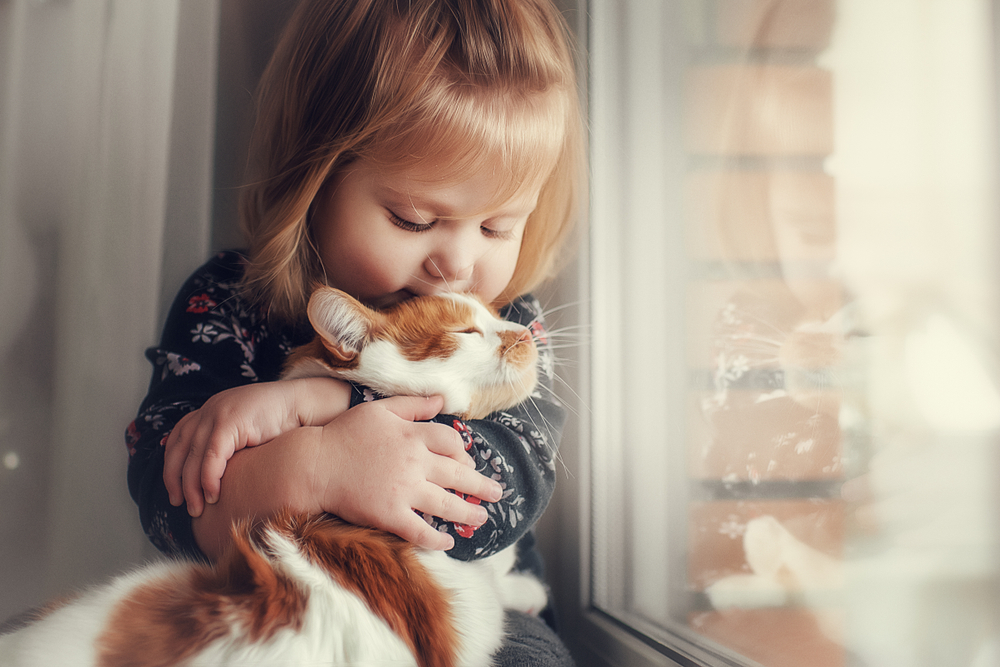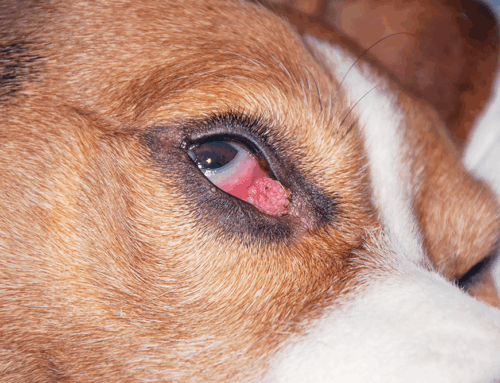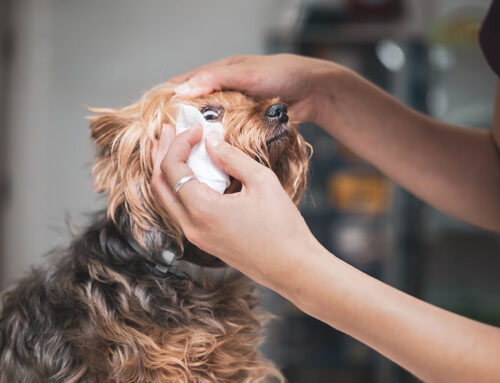Kids and pets are an adorable but potentially dangerous combination. Add pet blindness to the mix, and you have the potential for additional problems. Kids are most at risk for dog bites, because they cannot read or respond to a pet’s body language, and blind pets may act more unpredictably than sighted pets. Our Envision More Veterinary Ophthalmology team has compiled a list of tips to help kids and blind pets live safely together.
#1: Provide special training to blind pets
Whether your pet is slowly losing vision, has suddenly gone blind, or you’re bringing home a new blind pet, you can use specific training techniques to help them adapt and re-learn how to interact with the world. A well-trained blind pet who responds to voice commands and moves around confidently is easier to manage around children than one who is anxious about their surroundings or situation. Your pet should know helpful skills and commands that include walking nicely on a leash, responding to directional cues (i.e., “Step up,” “Step down”), and halting dead in their tracks at an emergency “Stop” command. Use positive-reinforcement techniques and practice these skills regularly to keep them fresh.
#2: Set up kid and pet zones in your home
Dividing your home using baby or pet gates will keep kids and pets safe when you cannot directly supervise their interactions. Designate a zone where your pet can sit on the other side of the gate, but still feel that they are near the action, because they can smell and hear your child and other family members. For newly blind pets or pets adjusting to your home, this also allows creation of a hazard-free zone where you don’t have to worry about them navigating on their own. In your pet’s zone, they should have an area where they can retreat to get away from your child if they want to discontinue an interaction—a crate serves this purpose well.
#3: Teach children how to treat pets with respect
Children can be rough with pets and want to touch areas that pets don’t necessarily enjoy. Teach children that pets are living beings, and they must respect their space and wishes, as they would another child or person. Show them how and where to touch their pet, avoiding their feet, hind end, and face, and to stay calm and quiet around pets. As they get older, you can point out body language cues that your pet is displaying, to help your child better understand. Always let your pet decide whether they want to interact with your child, and teach children that pets should be left alone when they choose to leave.
#4: Supervise interactions between kids and blind pets
Always supervise interactions between blind pets and kids and stay close so you can intervene if your pet shows negative body language signs, or your pet or child becomes overly excited. Accidents can happen quickly, and the most docile pet can bite under the right circumstances, so always remove your pet or child from the situation if you have to leave the room.
#5: Teach children how to safely approach a blind pet
A fast-approaching child or someone who touches your blind pet in their sleep can easily startle the pet. Teach children to talk to their pet every time they want to touch them, and to tell them what they are doing. Many children do this naturally, and develop more confident language skills by talking to their pet. Teach children to always leave blind pets alone when they are sleeping, or to shake their bedding or make noise nearby if they need to wake up, so they can hear you coming.
#6: Learn how to read your pet’s body language

Learning your pet’s body language is vitally important to keep your children safe when they interact. Your child won’t recognize your pet’s cues, so it’s up to you to read them and respect what your pet is telling you. Pets often perceive children differently than humans, and may feel threatened by their movements or stressed by their cries.
Your pet may indicate that they are distressed and should be removed from the situation with extremely subtle signs, including yawning, lip-licking, panting, or looking away, that progress to growling or biting if they are ignored. Remember, pets do not bite without warning—most people simply miss the warning.
Kids can live together with blind or sighted pets so long as parents take a few extra precautions to ensure everyone’s safety. Remember that pain from the eyes or other body areas can make pets less tolerant to being handled and may increase the bite risks to your children.
Schedule a visit with our Envision More Veterinary Ophthalmology team and adhere to our treatment recommendations to help ensure your pet’s eye condition is not causing them discomfort or pain, and to protect your children—blind pets with no pain are less likely to act inappropriately if startled.







Leave A Comment